Motioning with our hands fall into place easily for us, be it the center finger or the approval. We have been utilizing motions like these since time started. However, have you ever attempted to consider the way that despite the fact that these signals appear to be so typical and simple, every one of them has a starting point? All things considered, we wager you never consider everything! Along these lines, we bring to you 10 regular hand signals and their beginnings. Peruse on to discover more!
1-The v sign was initially an unfavorable motion. It was uniquely during WWII that a Belgian lawmaker, through a BBC radio station, asked individuals to utilize the letter V for victoire (French for “triumph”) and vrijheid (Dutch for “opportunity”) as an image of opposition.
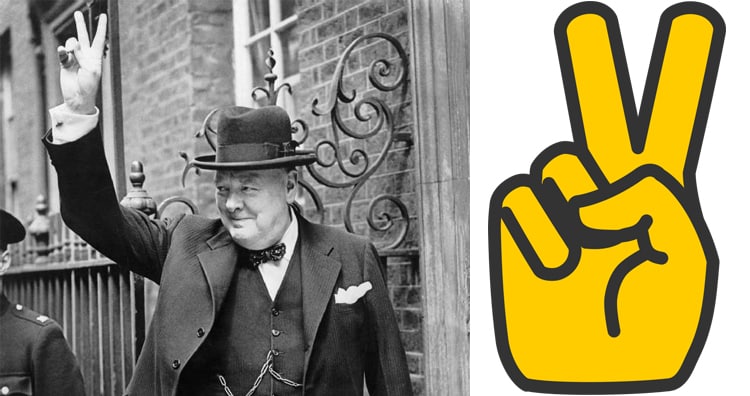
The V-sign, or the Victory sign, is perhaps the most widely recognized hand signals in which the record and the center fingers are raised. They are then separated while different fingers of your hand are gripped into your clench hand. In spite of the fact that we for the most part utilize the sign to indicate triumph or harmony, the sign represents various implications relying upon the way of life and when it was utilized. For instance, in certain nations, basically the Commonwealth countries, the V-sign with the rear of your hand away from you has been considered as a hostile motion. While in WWII, it was utilized to represent opportunity. Afterward, in certain nations like Japan, the sign was likewise utilized as a motion while showing up in photographs.
For quite a while, the V-sign motion or “the finger” has won as a slanderous motion in England. This spread to different pieces of United Kingdom and furthermore Australia, Ireland, India, New Zealand, and Pakistan. A typical legend that proposes the starting point of the motion guarantees that it was gotten from a signal made by the longbowmen who were battling in the Hundred Years’ War. The legend goes that when the longbowmen were caught by the French, their list and center fingers were cut off so they could presently don’t work a bow and bolt. Henceforth, the V-sign was utilized by uncaptured bowmen as a demonstration of disobedience. In any case, there is no essential source that could check this legend.
Anyway, the V-sign advanced into the cutting edge Victory sign on January 14, 1941. On this day, the previous Belgian Minister of Justice, Victor de Laveleye, utilized a BBC radio station to encourage the Belgians to utilize a “V” as their image while mobilizing during the WWII. The V represented victoire which signifies “triumph” in French and vrijheid which signifies “opportunity” in Dutch. This was so generally acknowledged by individuals that the BBC ran a “V for Victory” crusade. The significant imagery of the letter V spread across involved Europe, and even Prime Minister Winston Churchill started recognizing the V hand sign.
In 1942, a British soothsayer by the name of Aleister Crowley asserted himself as the designer of the V-sign and guaranteed that it was he who gave it to his companions in BBC. However, his story has never been demonstrated.
2-The source of the center finger can be gone back to antiquated Rome and Greece where individuals accepted that an all-inclusive center finger looked like a man’s conceptive organ and as far as anyone knows had the ability to avert the stink eye. It was additionally utilized as a way to affront the beneficiary.
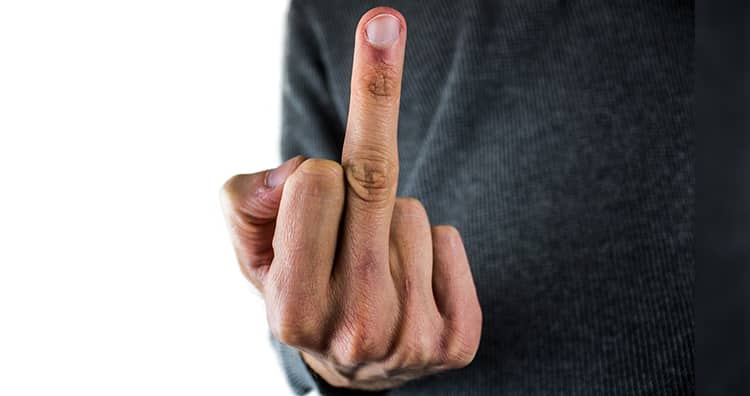
Quite possibly the most widely recognized hand motions that we use on an everyday premise in the center finger. For a few of us, it expresses 1,000 words! In many societies, it is utilized as an approach to show scorn. Once in a while it is utilized entertainingly or energetically with no purposeful lack of regard towards the beneficiary.
Like today, the center finger motion was utilized to affront the beneficiary in old occasions too. It was utilized as an image of sex and giving the finger to somebody intended to compromise or scare the individual accepting the signal. During the first century, in numerous Mediterranean nations, the motion was viewed as a portrayal of the penis with the fingers close to the center finger addressing the gonads. This nearby relationship with the male regenerative organ made the signal advance toward Apotropaic wizardry which is rehearsed to drive away the underhanded impacts.
Jesse Sheidlower, a language specialist, has followed the presence of the signal in the US to the 1890s. Desmond Morris, an anthropologist, accepts that the signal may have entered the US through Italian foreigners. The previously reported reference of the finger was in 1886 of every a photo. In it, a pitcher for the Boston Beaneaters ball club, Radbourn, was giving the finger to one of the individuals from the New York Giants, the opponent group.
3-The shaka or “hang free” motion began when a Hawaiian named Hamana Kalili lost his three center fingers in a sugar factory mishap. His all-away from of thumb and pinkie is said to have developed into the shaka as children started emulating the signal.
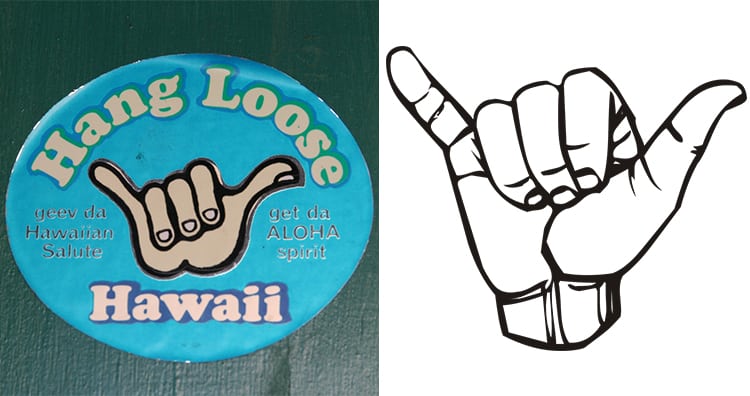
The shaka sign, which is ordinarily known as “the hang free” sign, is a motion related with the surf networks. The motion has been embraced by visiting surfers from the Hawaiian riding local area and has advanced all through the world. It principally connotes welcoming or offering thanks to each other.
To the extent the starting point of the motion, the most common legend is that of an individual by the name of Hamana Kalili, an inhabitant of Laie, used to work at the Kahuku Sugar Mill. Sadly, he lost the three center fingers on his correct hand in a shocking mishap. Since he could presently don’t play out any actual work that necessary the utilization of his hands, Kalili was moved to the work of guarding the sugar train. To give an all-unmistakable sign to the train, Kalili would wave his thumb and pinkie. This was imitated by the youngsters there and in the end, it advanced into the shaka.
There are different speculations also that are utilized to clarify the cause of the shaka. In one hypothesis, it is said that Spanish workers would overlay their center three fingers and carry the thumb to their mouth to represent a well disposed offer of imparting beverages to the local Hawaiian individuals. Another hypothesis likewise says that the first shakas were utilized by whalers when they needed to flag a catch.
Lippy Espinda, a performer, has additionally been distinguished as the maker of the shaka. He is known to have utilized the sign and the term during a significant number of his TV promotions. Despite the fact that the case of him being the maker is questionable, he has without a doubt had an influence in expanding the prominence of the shaka as a positive signal.
4-The handshake in antiquated Greece was initially accepted to be utilized to ensure that the individual you were meeting wasn’t conveying a covered weapon. Fastening the hands demonstrated that the hand was unfilled and the shaking movement was intended to oust any weapons covered up the sleeve.
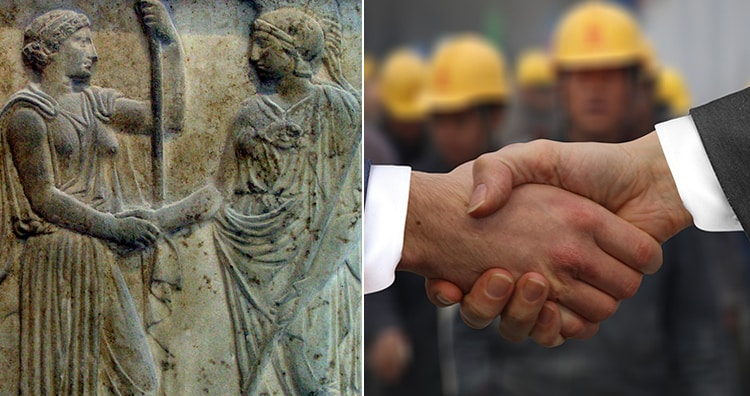
We shake hands when we meet somebody. Appears to be straightforward right? In any case, for what reason did this motion begin? What constrained individuals to get a handle on all fours it while meeting one another?
The story behind the birthplace of the handshake lies in antiquated remnants. Archeologists have found writings and artistic creations, dated as far back as fifth century BC, that portrayed the offer of shaking hands. There were numerous compositions that portrayed troopers shaking hands. This persuaded that possibly this was a system for individuals to check if the individual they were meeting conveyed weapons. Since weapons were most usually held at the correct hand, it turned into an amiable custom to shake by means of the correct hand as it were. This was utilized as an offer of harmony to show that no weapons were brought to the gathering. In addition, the shaking the hands during a handshake came from the likelihood that despite the fact that there were no weapons in the hand, there may be some covered up the sleeves! The shaking during a handshake would assist with uncovering that.
5-The clench hand knock comes from star fighters during the 1800s from individuals started impersonating how they contacted gloves, as a method of welcome, before a match.
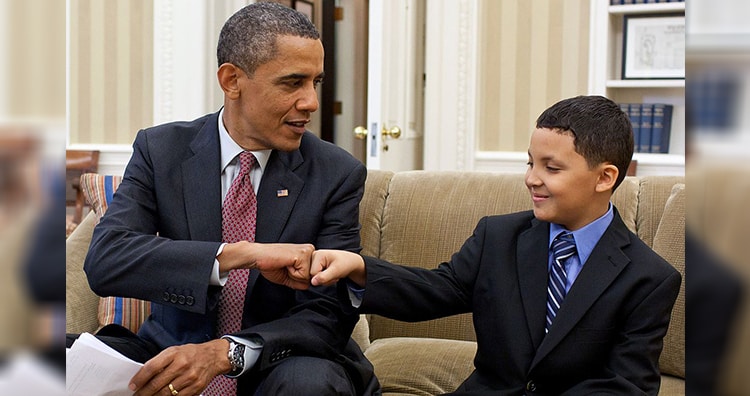
The clench hand knock is like a handshake and it’s protected to say that it is an advanced variant of the handshake. On the off chance that you have noticed intently, the clench hand knock is extremely mainstream in games, particularly sports with gloves. In cricket, it is a typical sight to see batsmen giving a clench hand knock to one another in the wake of scoring incredible runs. It is utilized as a celebratory motion in games.
This will bode well once we become familiar with the cause of the clench hand knock. The primary clench hand knocks can be followed back similarly as the last part of the 1800s and the mid 1900s to the unique handshakes that fighters used to welcome one another. Fighters couldn’t shake hands as their hands were gloved. Thus, they just turned to knocking their clench hands as a method of welcome. Furthermore, presto, the clench hand knock motion was conceived.
Like consistently, different speculations likewise exist with regards to its source. LaMont Hamilton, a Smithsonian specialist, accepts that the motion may have created during the Vietnam battle as an adjusted form of the Black Power salute which was restricted by the military.
In September 1990, Australia saw its first clench hand knock when two opening batsmen, Mick Tyler and Bob Minney, clench hand knock when the first over was finished. They kept on doing as such all through the game, and this movement proceeded into what’s to come. The demonstration likewise advanced toward different games in Australia and in the end different nations.
6-Horn sign, the mainstream stage performance motion, was initially an odd motion utilized as an appeal to avoid evil. It was Ronnie James Dio who made it mainstream in weighty metal music subsequent to taking in the sign from his Italian grandma.
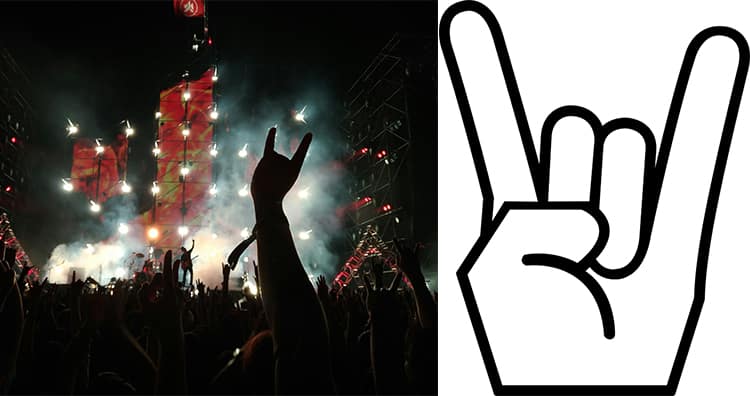
In the event that you have ever been to a stage performance or you are only an awesome music fan, at that point the horn sign, made by raising the forefinger and the pinkie while different fingers are collapsed, should be extremely natural to you. Indeed, much before it was utilized to represent awesome music, the horn sign was utilized to avert the steadily seeing hostile stare.
It was distinctly in 1979, when Ronnie James Dio turned into the lead vocalist for Black Sabbath, that the horn sign advanced toward rock metal music. Before Ronnie, Ozzy Osbourne was the lead artist for the band, and his unique hand motion, the twofold gesture of goodwill, had gotten a custom among his fans. Thus, when Ronnie made that big appearance, he chose to present another sign. He acquired the horn sign that his Italian grandma utilized as a way to avoid evil. He felt that the agnostic relationship of the sign would fit consummately with the band’s philosophy.
Dark Sabbath was not the main band to utilize the horn sign, however most likely it was the band which made it mainstream. The motion was utilized by the band Coven in 1969, which was a gathering that got motivation from nonconformity figures like Anton LaVey, an eminent Satanist, who utilized the horn sign to address the Devil.
7-The previously affirmed “high five” was between LA Dodger colleagues Dusty Baker and Glenn Burke. After Baker hit his 30th homer of the period, Burke met him with his hand held high over his head and Baker smacked it, later saying “It seemed like the activity.”
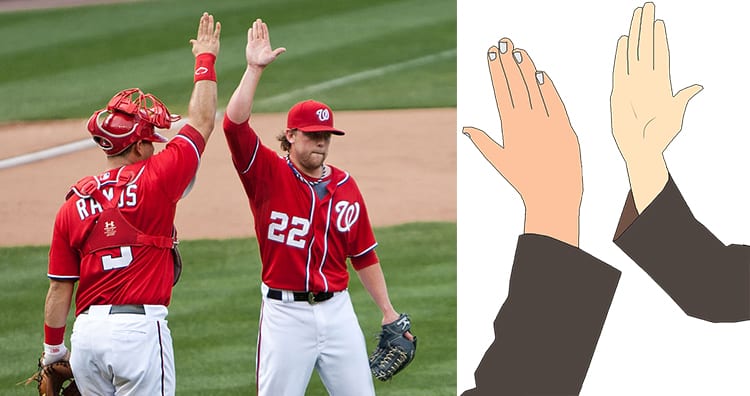
Who might have felt that something as straightforward as the high five would should be concocted? It appears as though this is something that individuals ought to have been accomplishing for quite a while. Yet, that is not the situation. Like everything, the high five has a birthplace and it was on second October 1977.
Dusty Baker of the LA Dodgers finished his 30th homer on this day at Dodger Stadium. This made the Dodgers the principal group in history to have four players with in any event 30 homers each. Glenn Burke, another colleague, was looking out for deck, and he lifted his hand high above head to welcome his companion Baker. Cook, ignorant of how to respond to this irregular welcome, smacked Burke’s lifted hand. “His hand was undetermined, and he was angling route back,” says Baker. “So I came to up and hit his hand. It seemed like the activity.”
From that day on, Burke and Baker high-fived their way through numerous games. What numerous individuals didn’t know around then was that Burke was gay. He came out to the world about his sexual inclination simply after he resigned in 1980. In 1982, he came out straightforwardly to people in general in an Inside Sports magazine piece called “The Double Life of a Gay Dodger.” The essayist, who was a gay lobbyist, at that point utilized the high-five motion as a headstrong image of gay pride.
That isn’t the solitary story of inception that has been told with respect to the high-five. During a b-ball practice at the University of Louisville, Wiley Brown gave a low five to his colleague Derek Smith. Smith didn’t acknowledge it and rather said, “No. Up high.” He accepted that since they bounce so high on the court, why resort to simply a low-five?
In another rendition of the source, Lamont Sleets asserted that his dad served in Vietnam in the first Battalion and his unit was nicknamed “The Five.” Their mark was the high-five motion, and Sleets guaranteed that this is the place where the high-five came from. Be that as it may, this story ended up being a lie.
8-The salute started in middle age France when knights welcomed each other by raising their visors. In the military too, troops needed to eliminate their headgear within the sight of bosses. This demonstration of raising or eliminating headgear reverted to simply contacting the headgear and offering a welcome, subsequently the salute.
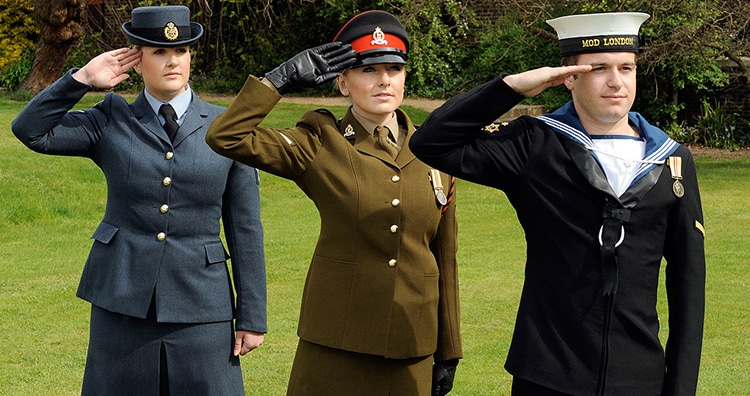
As the name recommends, the salute has its birthplaces in the military. As per numerous military manuals, it began in France. There, the knights used to wear a visor, the headgear made of steel that was important for the shield, and they would lift up their visors to wonderfully welcome each other in a saluting movement.
There is another clarification with respect to the inception of the salute. As indicated by the US Army Quartermaster School, it is a custom in the military that within the sight of bosses, the subordinates are needed to eliminate their headgear. A trooper would eliminate his headgear as a salute to his bosses. In any case, when the headgear turned out to be too awkward in the eighteenth and nineteenth century, troopers just depended on the basic offer of contacting or holding their visor as an obliging welcome. Over the long haul, this motion developed into the current salute that we know today.
9-The beginning of the approval sign can be gone back to antiquated Rome while, during gladiatorial battles, the observers would go through the thumbs sign when they needed the fighter to be killed.
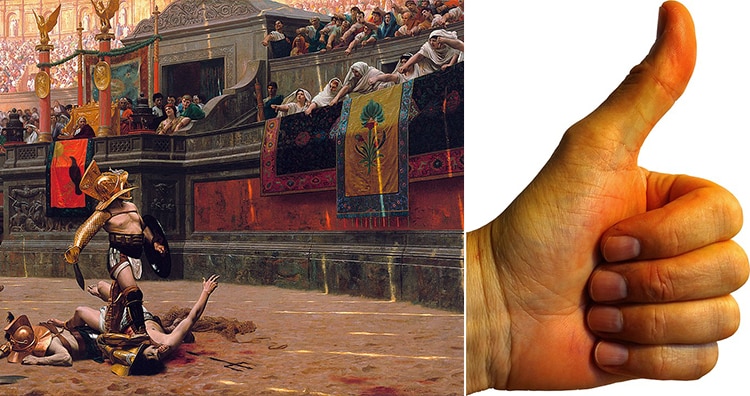
The approval sign is utilized regularly to give endorsement. For instance, on the off chance that you like a post on Facebook, you offer it a go-ahead. This signal has really proceeded to turn into an allegory in English writing. For instance, saying “He offered me a go-ahead on my exhibition” implies that the individual endorsed your presentation, and he enjoyed it.
There are numerous occasions that portray the inception of the approval signal. One returns to the extent antiquated Rome. As ahead of schedule as 110 BCE, gladiatorial battles were very regular in Rome. When a combatant was vanquished, the triumphant fighter would admire the crowd for their decision on whether to execute him or present kindness to him. The group would answer with signals known as pollice verso. An approval by swarm showed that the crushed fighter ought to be saved, and a disapproval implied that he ought to be murdered.
However, as per a traditional investigations educator, Anthony Corbeill, it was really the approval sign that flagged slaughtering the vanquished fighter, while a shut clench hand with the thumb folded over flagged saving him.
10-Intersection fingers for best of luck came from the pre-Christian time when two individuals would frame a cross utilizing their forefingers while making a wish. At last, it advanced into intersection two fingers of a similar hand.
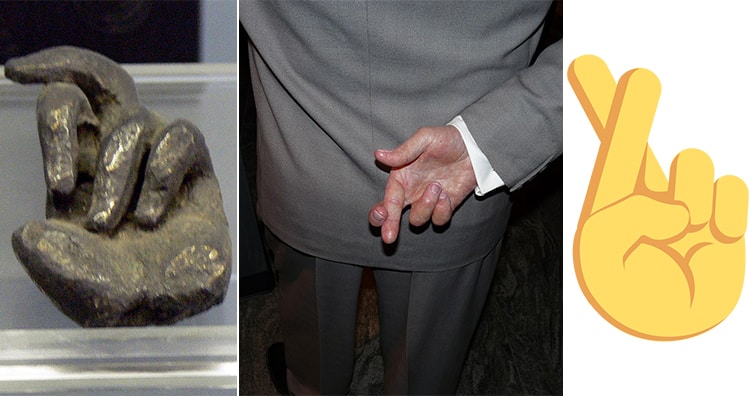
Do you regularly cross your fingers while wanting for best of luck? Do you frequently advise your companions to keep their fingers crossed while anticipating some significant news? At that point, old buddy, you are participating in an antiquated custom!
Indeed, crossing fingers is an old custom pervasive in the pre-Christian period. The lone distinction between the present signal and the antiquated one is that prior two individuals were needed to play out the custom. Two individuals would meet their pointers with one being the wisher and the other being an ally and an adherent to your desire. The idea started from the agnostic conviction that the convergence of a cross is the abode of numerous positive feelings. Individuals accepted that making a wish on a cross would empower the wish to be chipped away at by the positive feelings until it was satisfied. Additionally, wishes made in a particularly would be wise to odds of getting satisfied as the positive feelings would fend evil off.
As time passed by, the prerequisites of this exceptionally facilitated, and individuals could now wish simply by intersection their own fingers without the guide of someone else. The custom has gotten casual and mainstream in present day times. Today, it has developed from two individuals crossing their forefingers to individuals crossing their own fingers, lastly to individuals trying to say they are keeping their fingers crossed without really doing the demonstration.